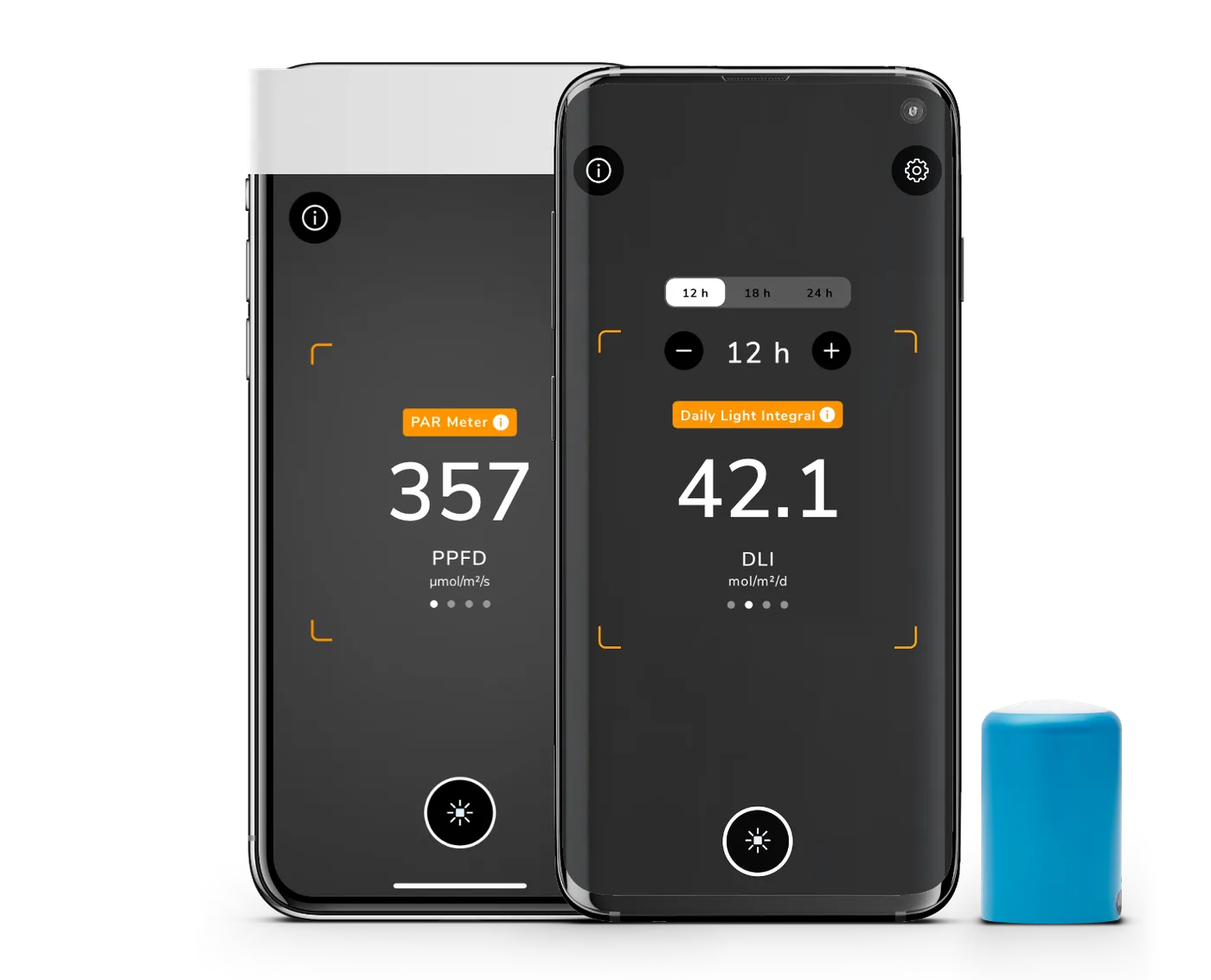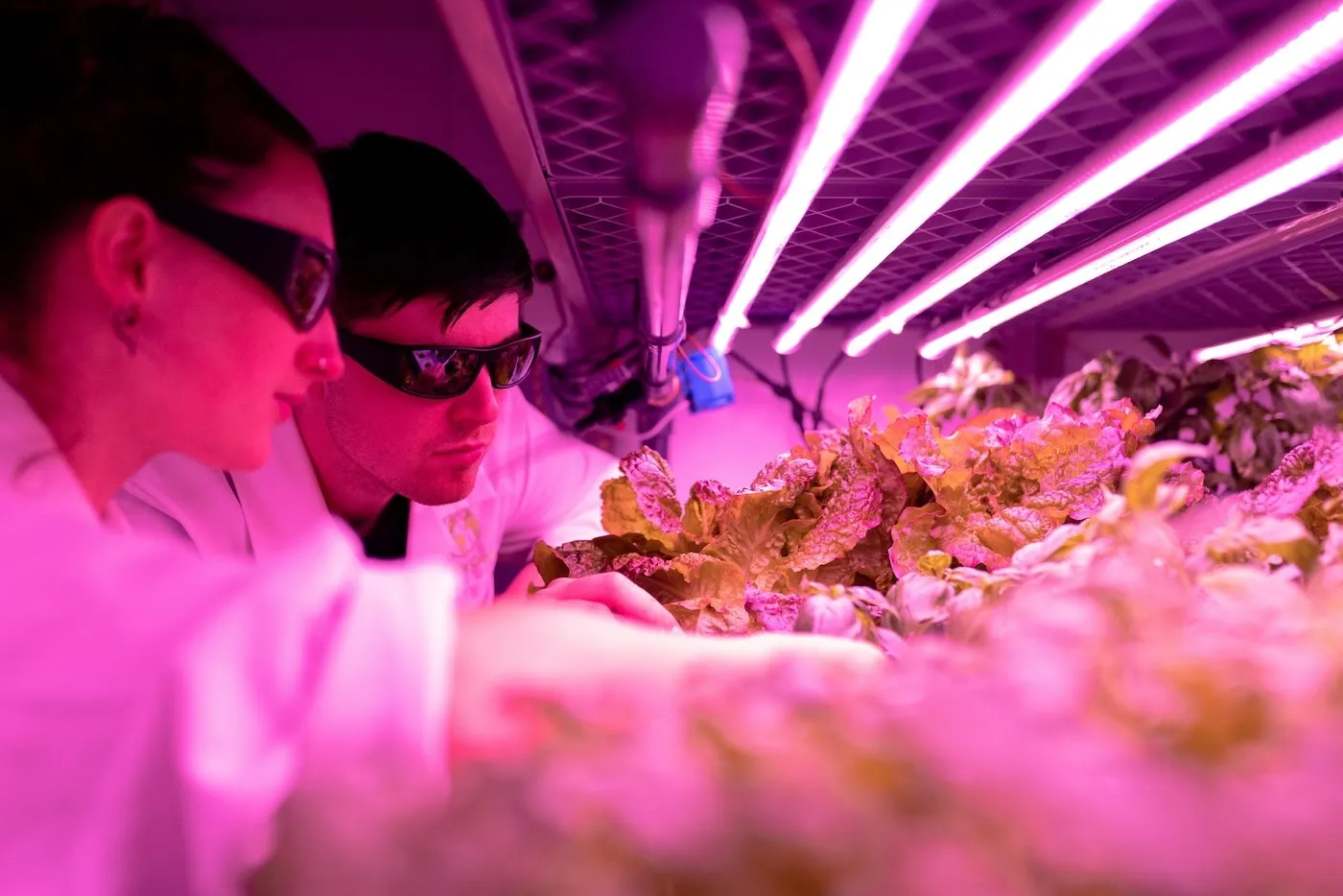
Auto-Translate
Providing your plants with good lighting is the key to healthy plants and a bountiful yield. If you’re running your indoor grow on a “starter” light and want to up your lighting game to the next level – this article is for you!
There are multiple reasons for upgrading your lighting: You want faster and more growth, you want to cultivate more plants, you want to run your grow more efficiently, or your current grow light might just not cut it anymore.
As we are in the business of measuring plant lighting, we come across many grow lights and get asked quite frequently about our opinion and what lights we recommend. This article summarizes our experience and provides explicit recommendations which grow light to acquire.
Contents
Defining Your Needs
We believe it is crucial to start with your individual needs before evaluating which light is right for you. As you probably know, the market for grow lights became increasingly flooded over the past few years and choosing the right grow light can feel overwhelming. We break your needs down to the following categories:
The plants you grow: You need another grow light if you want to propagate vegetable seedlings to put them in your outdoor garden than for growing a cannabis plant from seed to harvest. This article is generally tailored for growing cannabis, but the same principles apply for other light intensive crops such as tomatoes, peppers, corn, or many other vegetables.
The size of your grow space or tent: You’ll get the best results when your grow space is covered with light at an even intensity. Grow lights come at different shapes, sizes and intensities with the goal to provide an even PAR footprint in the desired intensity effectively.
The budget you have – both to invest and to operate: It is always important to operate your grow economically. But don’t be fooled: Some lights might be cheap to buy but very expensive to operate! Thus, it’s important to define your budget for purchasing the light as well as having a rough idea about operating it.
Even with just these three factors, the possibilities for suitable or unsuitable grow lights become vast. There are other considerable factors such as durability, longevity, customer support, the company that’s behind and many more. We have high standards and only recommend grow lights that provide a very good balance of all of them.
Recommended Grow Lights
The technology of grow lights – especially LED – has evolved rapidly through the last few years and using a full spectrum LED grow light is the best option in almost any case. LED grow lights are efficient, tuned for plants, have a long lifespan, are relatively cost-effective to acquire and especially to operate. Therefore, all of our following recommendations cover full spectrum LED plant grow lights suitable for growing from seed to harvest. As not every grow light is the optimal fit for everyone, we’ve created the following two categories that are distinguished by budget and plant count.
Bedroom Grow on a Budget
If you want to grow cannabis from seed to harvest in a small and simple setup with good yields, a light capable of providing a usable PPFD of around 700 µmol/m²/s is desired. This light intensity is sufficient to achieve a DLI level of 45 mol/m²/d for the vegetative phase as well as a DLI level of 30 mol/m²/d for the flowering phase. To optimally use any grow light for cannabis, we recommend our article on DLI levels across the full cannabis growth cycle.
If your grow space is a bit smaller (i.e. a 2x2 ft or 0.6x0.6 m tent), a single LED quantum board will light your plants sufficiently.
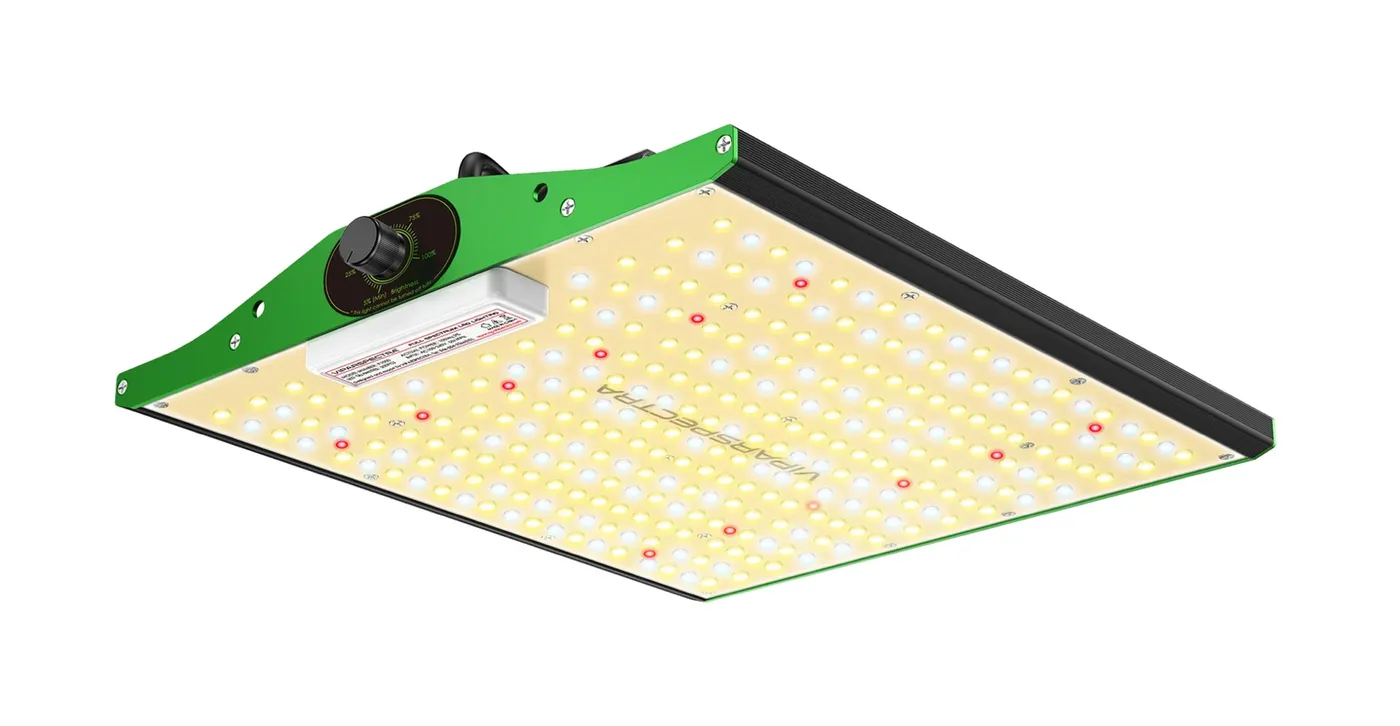
Less than $100: ViparSpectra P1000
As a new spin on the quantum board design, the ViparSpectra P1000 provides great value for money and packs a bunch of new features along.
The grow light is ideal for small 2x2 tents and draws only 100 W of power. It is using a mixture of high efficiency LEDs and achieves a good efficacy of 2.26 μmol/J in a noiseless passive-cooled design. The power supply is dimmable that allows you to run your grow at maximum efficiency throughout the growth cycle.
We recommend this grow light to anyone that is seeking the best bang for buck.

Less than $150: HLG 100 Rspec Quantum Board LED Light
The Horticulture Lighting Group (HLG) Quantum Board is the original quantum board and we've been a fan ever since!
The grow light is ideal for small 2x2 tents and draws only 91 W of power. It is using high efficiency Samsung LM301H LEDs to achieve a rather high efficacy of 2.35 μmol/J in a reliable passive-cooled design. The power supply is made by Mean Well – a high-quality brand – but unfortunately not dimmable. The build quality and durability is top notch as usual for any HLG light.
We recommend this grow light for anyone that is looking for a lower power light that lasts.
If you're running a medium-sized home grow (i.e. a 3x3 ft or 1x1 m tent), a combination of multiple quantum boards or a spider-type bar light will be the LED grow light of choice. We especially like bar LED grow lights due to their even coverage.
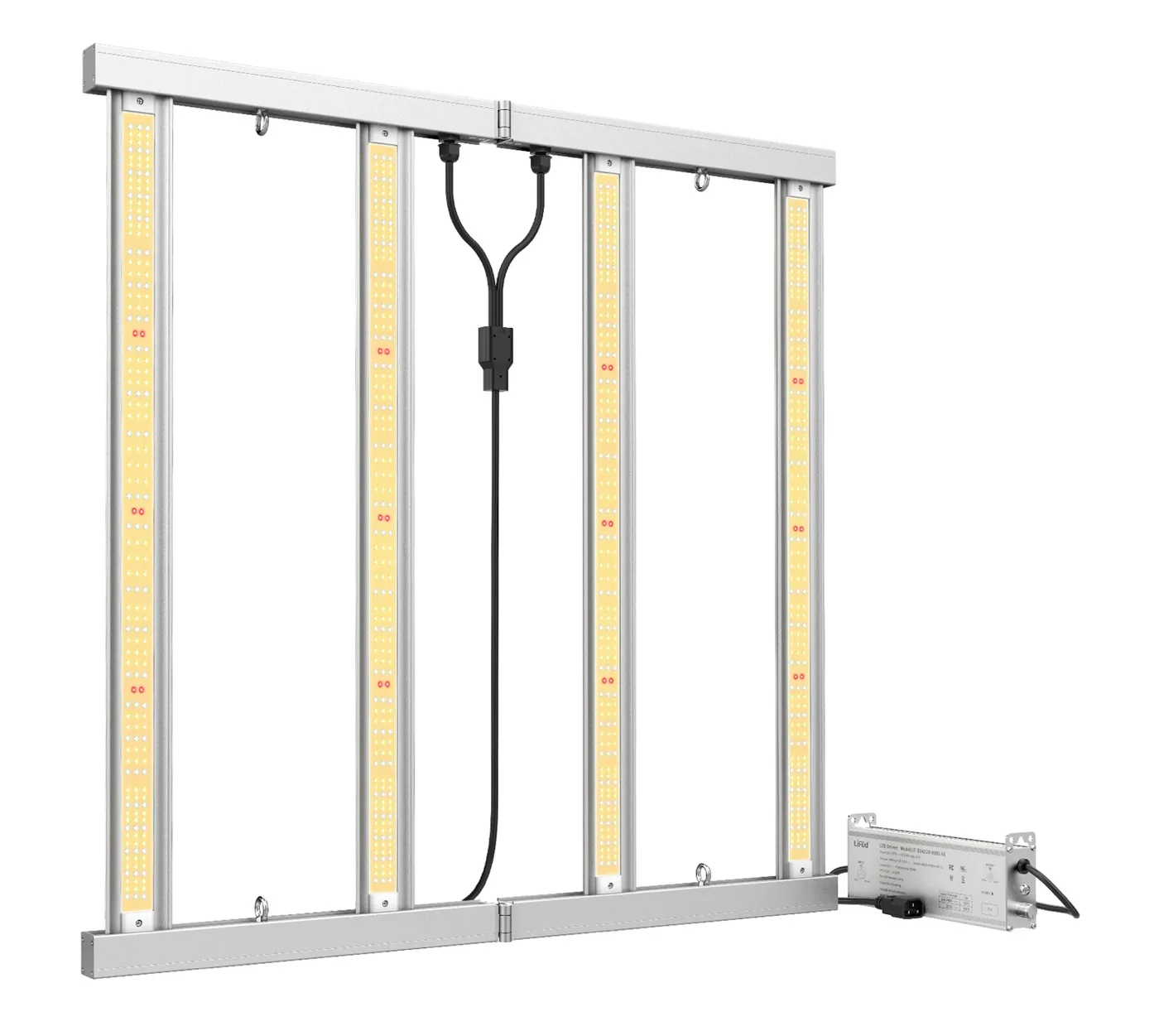
Less than $400: ViparSpectra KS3000
The design and build of the KS3000 is dipping its toe into professional territory at a very attractive price.
The grow light provides excellent coverage of a 3x3 grow space allowing you to pack it from corner to corner and draws 300 W of power through the dimmable remote power supply. The LEDs are a mixture of highly efficient Samsung chips that are spread out unevenly to reduce any hot spots in the center of your grow tent. The grow light achieves an efficacy of 2.3 μmol/J, which is quite high.
We recommend this grow light to anyone on an ambitious growing journey with a higher plant count.
If your grow is already a bit bigger and you're running on a higher plant count with ambitious yields, our next category might suit you better:
Enthusiast Home Grow
To grow cannabis with maximum yields, CO2 supplementation and carefully adjusting DLI levels across the full cannabis growth cycle is highly recommended. A grow light providing a PPFD of around 1000 µmol/m²/s is desired to achieve a DLI level of over 60 mol/m²/d for the vegetative phase as well as a DLI level of 45 mol/m²/d for the flowering phase.
For a larger home grow, we especially like spider-type bar LED grow lights due to their even coverage of grow spaces such as 4x4 tents or a multiplier thereof.
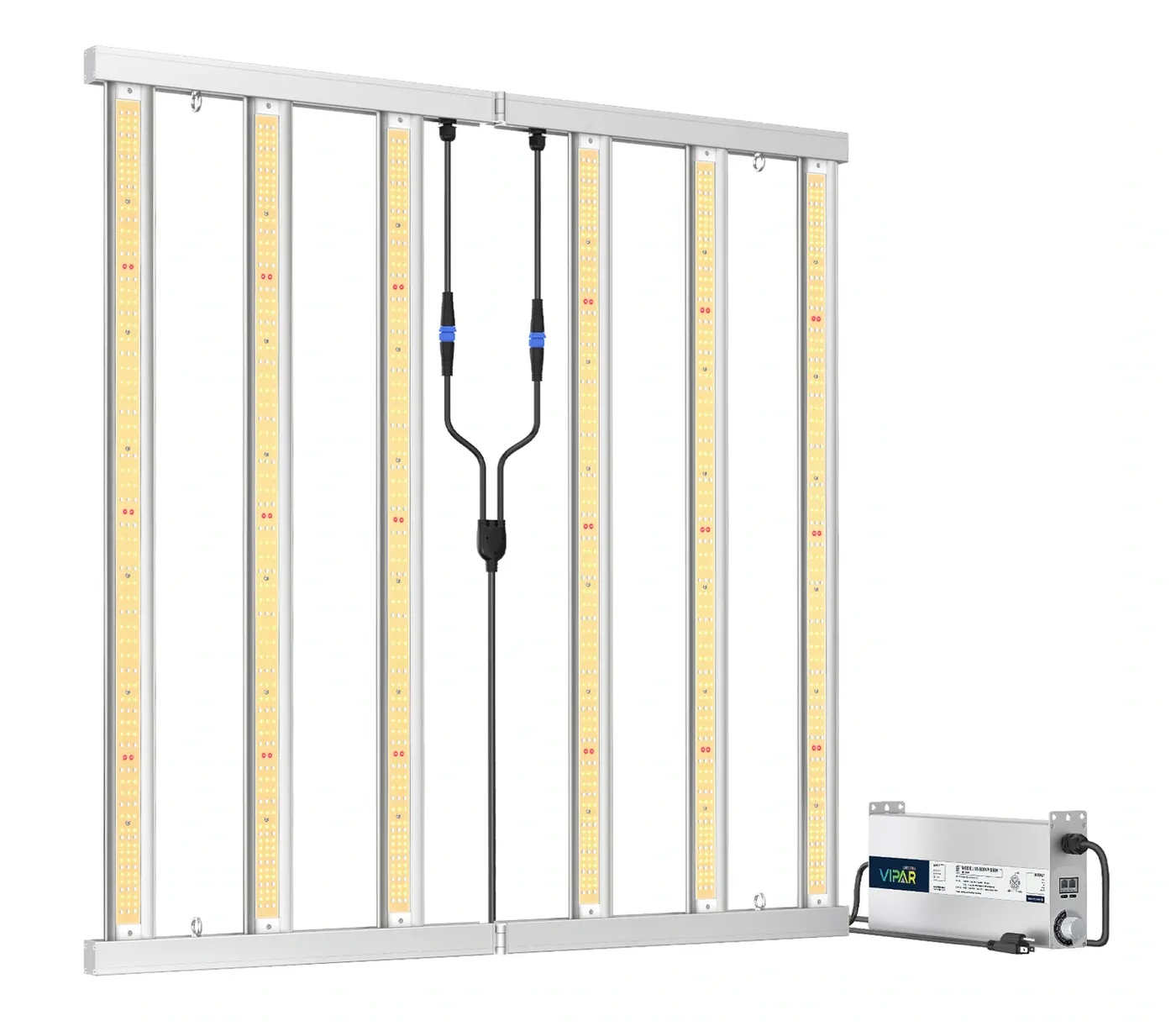
Less than $700: ViparSpectra KS5000
The ViparSpectra KS5000 is dipping its toe into professional territory at a very attractive price.
The grow light provides excellent coverage of a 4x4 grow space allowing you to pack it from corner to corner and draws close to 500 W of power through the dimmable and remotely attached power supply. The LEDs are a mixture of highly efficient Samsung and Osram chips that are spread out unevenly to reduce any hot spots in the center of your grow tent. The grow light achieves an efficacy of 2.3 μmol/J, which is quite high and ideally suited for growing cannabis.
We recommend this grow light to anyone on an ambitious growing journey with a higher plant count.
If you're looking for a professional-grade light that is Made in the USA, we can highly recommend ChilLED as an exceptional supplier.

Upwards of $1000: ChilLED Growcraft Series
The ChilLED Growcraft lights provide an excellent coverage, very high build quality, as well as a controllable spectrum that supports both the vegetative and the flowering phase effectively.
The grow lights are made for 4x4 and 5x5 grow spaces and multiples thereof with a power draw of 600 W at full power. The power supply is remotely attached to keep the heat out of your grow space and is dimmable to best suit your plants across their whole growth cycle. The grow light achieves an excellent efficacy of >2.65 μmol/J using only the best LED chips available on the market.
We recommend this light for anyone that wants a full spectrum LED grow light without any compromise that is built to last.
Grow Light Metrics
When researching grow lights, you will inevitably stumble across some common metrics to quantify a grow light’s performance. Some of them are more advanced while others are pretty common. Assuming you aren’t an engineer or a horticulture scientist, we’ll briefly explain the most common terms used when specifying a plant grow light.
Power Draw describes the electrical power consumption in Watts. Your electricity is generally paid in kilowatts per hour (kW/h) meaning that a 1000 W (one kilowatt) grow light turned on for an hour consumes one kilowatt-hour. This is important as electricity consumption should not be neglected and can easily cost you more money than you’ve initially assumed. The average cost per kilowatt-hour currently lies around 11 cents in the US. Thus, keeping a 600W grow light on for 18 hours a day already costs you $35 per month.
Spectrum describes the grow light’s distribution of color. Plants “see” light differently than the human eye and use different colors of light for biochemical processes such as photosynthesis. In order to quantify the amount of light within the right spectrum correctly, photosynthetically active radiation (PAR) – meaning “light for plants” – is measured as PPFD. A grow light’s spectrum should be optimized to match the plant’s needs which is a bit different across plants as well as across plant growth stages mimicking the seasons. The grow light’s spectrum is especially of importance when growing cannabis as it also impacts cannabinoid content and flavor.
Light Output (PPF or YPF) specifies the total amount of light that is usable to plants leaving the grow light. It is usually specified as photosynthetic photon flux (PPF) or less common as yield photon flux (YPF). The light output is commonly used to compare a grow light’s power and – if measured properly and communicated by the manufacturer honestly – is a good metric for comparison. However, what ultimately counts is the light that is actually reaching your plants’ leaves in your grow room. Therefore, you’ll want to measure PPFD to properly set up and use your light. If this whole concept of PPF and PPFD is new to you, we recommend our article on exactly that.
Efficacy is the grow light's ability to turn electricity into light for photosynthesis. It is measured using photosynthetic photon efficacy (PPE) in the unit of µmol/J that describes the PAR output (remember: PAR is light for plants) per Watt of electricity used. In general, the higher the efficacy, the better.
Coverage defines the grow light’s ability to illuminate an area effectively. It is often compared using PAR maps (also called PPFD footprint charts or PPFD maps) that contain different measurements across an area at a certain height of the grow light. Comparing PAR maps of different sources can be tricky as the environment does have quite an impact (e.g. using white or mylar walls vs. an open space) and is not standardized. Ideally, a PAR map uses the same kind of environment as you do so you can rely on it.
If you want to dig deeper or still stumble across some terms you'd like to know better, we recommend our collection of all relevant grow lighting and light measurement terms:
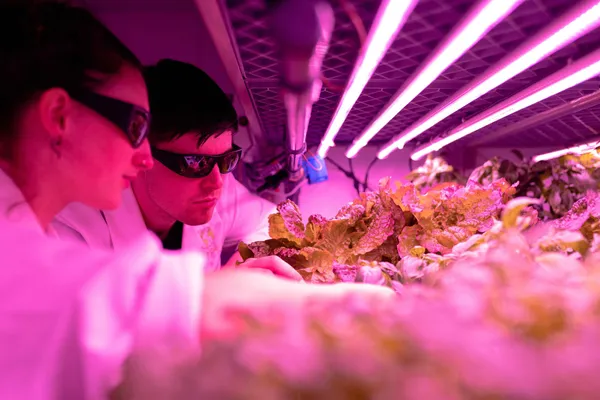
Measuring Your Grow Light
As you know by now, even the best selected grow light isn't magically running properly. To optimally set up, adjust, and check your grow light, you'll need to measure the PPFD your plants actually receive.
To do so, a PAR meter is needed. Traditional PAR Meters such as the Apogee MQ-500 or other quantum PAR sensors easily cost you many hundreds of dollars and aren't attainable for most of us. Luckily, there are other solutions such as our PAR meter app that not only allows you to measure PPFD but also the daily light integral (DLI) and color temperature (CCT in kelvin) that comes in handy for all your plant lighting desires.
We hope this article was helpful to you and thank you for reading!

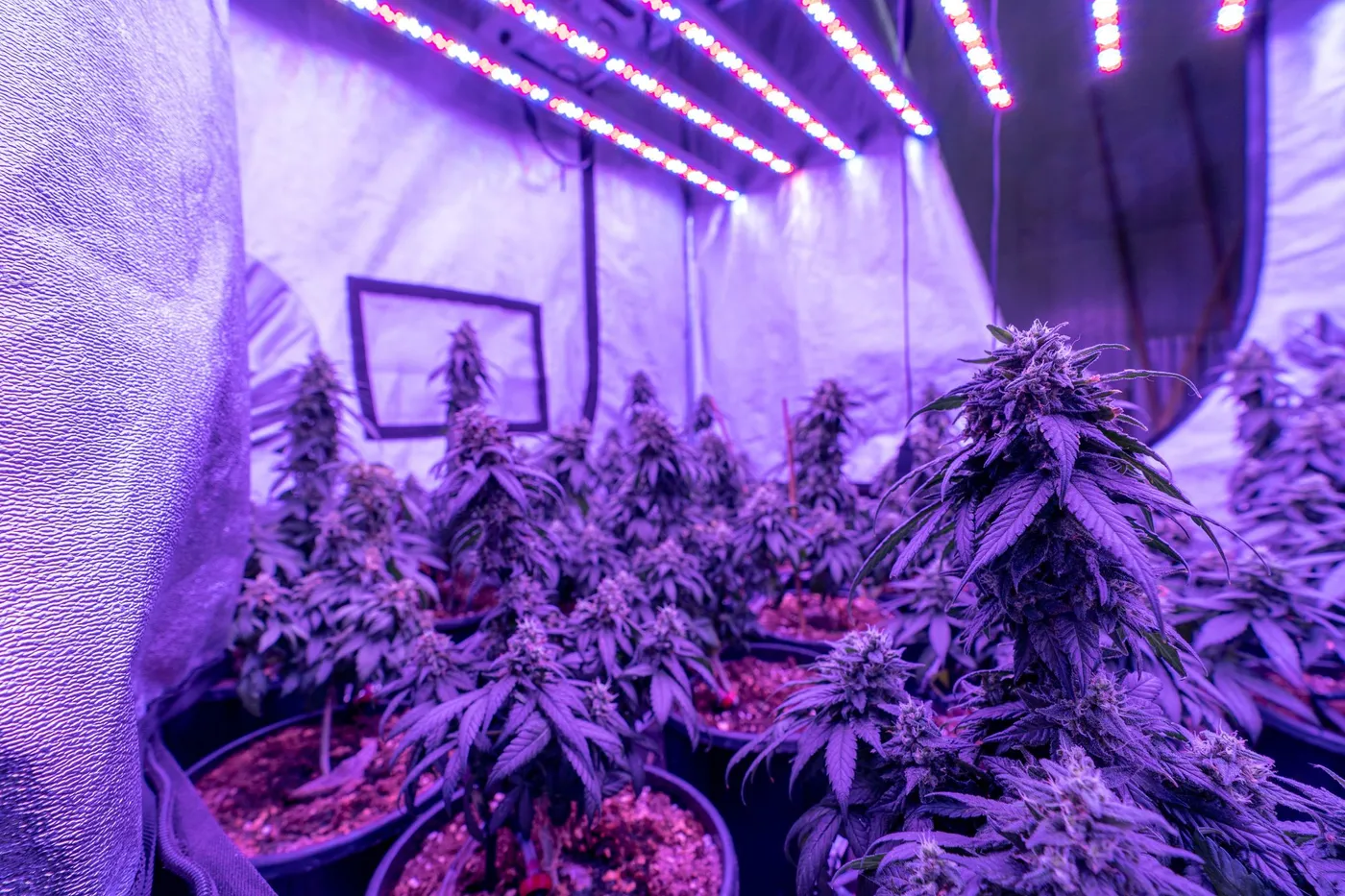
 Share This
Share This




